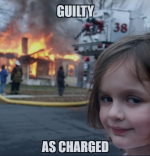Hambone
New Member
In the midst of building a 386 system from some extra parts, I ran into a wall with sound. I'm having an issue with my Sound Blaster 2.0 (CT-1350B) not correctly outputting the 8-bit digitized audio. The FM synthesis works beautifully, but the digital audio is almost non-existent; quiet and so full of static that nothing is really heard even at full volume.
I have tried different IRQ's and both 220 and 240 I/O's. I have also tried different slots in my system. I remember having this issue with the same card when installed into an IBM 5170, and eventually I got it working, but I cannot remember what the fix was.
I've tried the v1.0 drivers in addition to the latest one's from 1993.
Last two things. I also disabled the joystick port in case that was conflicting. And i've tried the DMACTL jumper at the high and low settings with no noticeable difference.
I apologize if this topic has been covered. Believe me when I tell you that I used the search function on the forums, as well as google. A few hours burned in total.
I have tried different IRQ's and both 220 and 240 I/O's. I have also tried different slots in my system. I remember having this issue with the same card when installed into an IBM 5170, and eventually I got it working, but I cannot remember what the fix was.
I've tried the v1.0 drivers in addition to the latest one's from 1993.
Last two things. I also disabled the joystick port in case that was conflicting. And i've tried the DMACTL jumper at the high and low settings with no noticeable difference.
I apologize if this topic has been covered. Believe me when I tell you that I used the search function on the forums, as well as google. A few hours burned in total.


